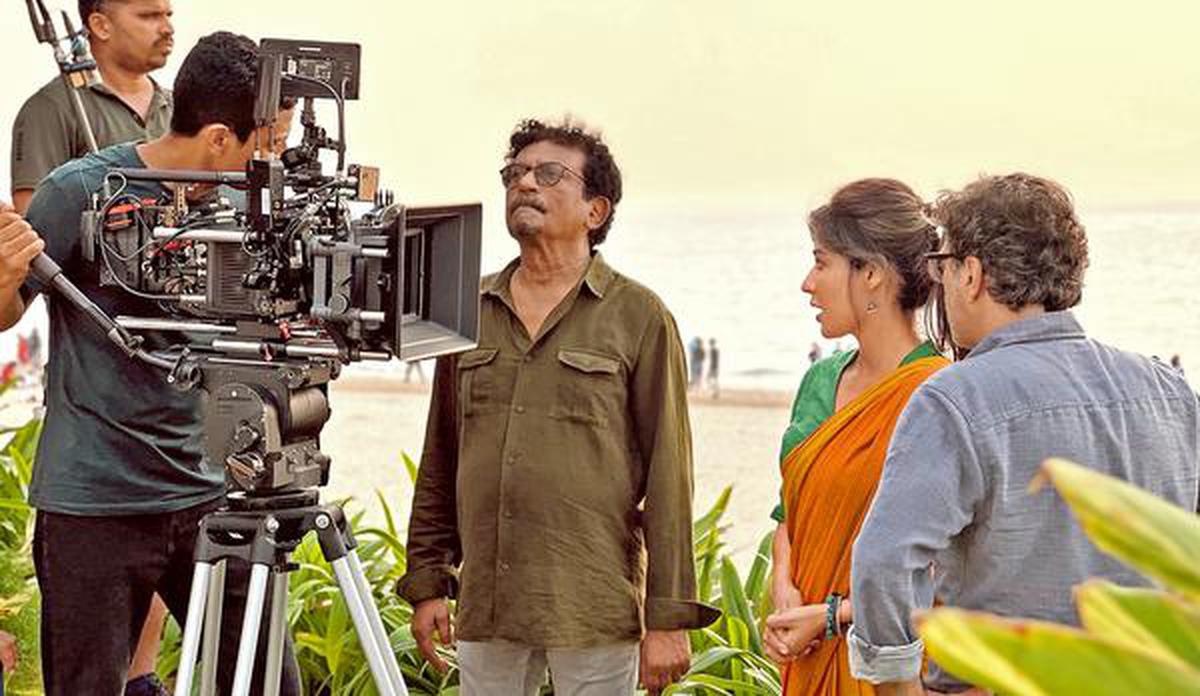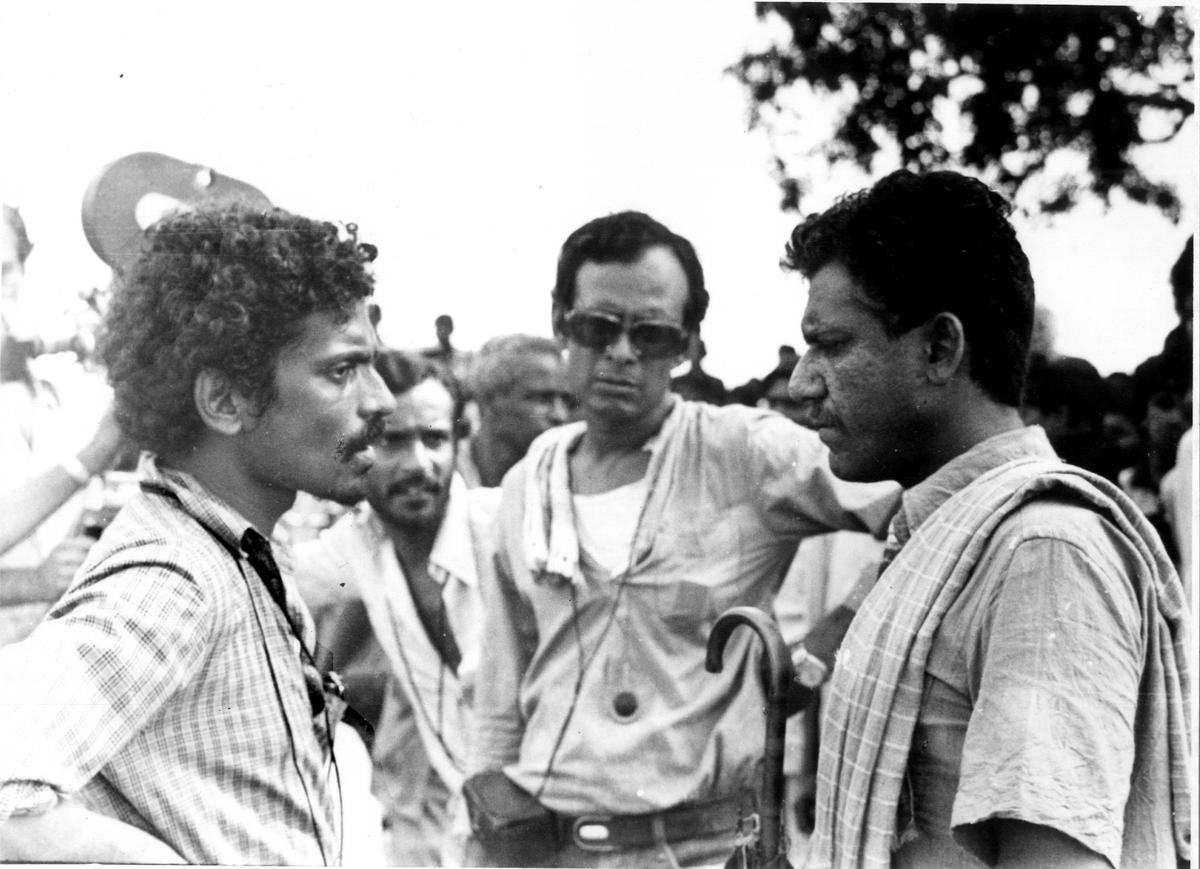The empathetic gaze of Goutam Ghose

Goutam Ghose is one of those rare filmmakers who seamlessly blends craft with conscience, and continues to be relevant five decades after he started his journey. Deeply political in thought and poetically resonant in expression, his camera has shunned trends and consistently captured the churn in Indian society, with empathy for the deprived and the marginalised.
His visually stunning and politically charged works like Maa Bhoomi (1979), Dakhal (1982), Paar (1984), Antarjali Yatra (1987) and Padma Nadir Maajhi (1993) have withstood the test of time. Not to forget his documentaries that touched upon myriad issues and personalities. From a distressing look at food shortage in Bengal in 1974 in Hungry Autumn to the sonorous highs of Ustad Bismillah Khan, he has documented life as it is.
Not limited by genre, form and language, Kolkatay Mujib, his 65-minute documentary on Sheikh Mujibur Rahman, is awaiting release while his Indo-Italian production with Marco Leonardi and Chitrangada Singh will be in theatres early next year. In between, the 73-year-old made a one-of-a-kind documentary on the Kolkata High Court and filmed Raahgir, a heart-rending tale of three strangers who form a special bond in adversity in Jharkhand. “I never saw documentaries as a stepping stone to becoming a feature filmmaker. I am equally passionate about fiction and non-fiction,” says Ghose, during an interview in Delhi.
Edited excerpts…
How did the documentary on Sheikh Mujibur Rahman’s connection with Kolkata come about?
Not many know that Mujib was studying at Kolkata’s Islamia College (now known as Maulana Azad College) between 1942 and 1947, a very important period in the history of the Indian subcontinent that shaped his personality and politics. It was a turbulent time that saw the Bengal famine, the political divide between Hindus and Muslims and the eventual Partition of India. Young Mujib was a member of the Muslim League. The party had orthodox and liberal factions. Mujib was among the liberals. They were dreaming that Muslims would get some kind of liberation with a separate State but later Mujib regretted this division. I have based it on Mujib’s autobiography (The Unfinished Memoirs) where he has talked about the dichotomy of the times.
The film comes full circle when on February 6, 1972, after Bangladesh’s liberation, Mujib returned to Kolkata and made an emotional speech at the Brigade Parade Ground. I was in the crowd that day and have vivid memories. The Bangabandhu said, ‘I was here but unfortunately we were separated’. Kolkata was the headquarters of the Bangladesh freedom struggle; when the foreign ministry of Bangladesh approached me, it touched a chord.
What is the format of the film?
We didn’t have any images of Mujib’s student life in Kolkata. We have used footage of the Liberation Movement and his speeches. There is no recreation or dramatised presentation. His daughters, (Bangladesh Prime Minister) Sheikh Hasina and Rehana have opened up in front of my camera to put the period in perspective. We also interviewed 99-year-old Nihar Chakraborty, who was Mujib’s contemporary in college. He speaks about their friendship and Mujib’s courage.

Goutam Ghose, Chitrangada Singh and Marco Leonardi at work on ‘Parikrama’
Tell us about your upcoming Indo-Italian production
It is about the journey of an Indian village boy and an Italian boy. They are like two poles and through their journey we find that the socio-economic conditions might be different but childhood is the same. We have called it Parkirama, a trilingual film where characters speak in English, Hindi and Italian with English subtitles.
The climactic scene of Paar (1984) where Naseeruddin Shah and Shabana Azmi make a litter of pigs cross a river in spate for a few bucks still gives goosebumps…
It is the high point of the film. The couple comes to the city to survive after a caste feud in the village. I see the climax as a metaphor for endurance. It happens to everybody. Nature has to endure and so do we. My actors were tremendous. It was both an emotionally and physically demanding scene as there was no digital help in those days.

Goutam Ghose with Om Puri on the sets of ‘Paar’
| Photo Credit:
Special Arrangement
Why do you think the space for the marginalised sections in society is shrinking in cinema?
The deprived are missing from a large section of the media too. They are missing from the mindset of the new economy and the new generation. They are more interested in global matters than what is happening at the grassroots. Even if you give a proposal to a production house, they are not interested in listening to the common people’s voice. It is very unfortunate but you can’t blame them because they represent the changing economy and the changing mindset of the country. A small section is excited about the development. It is good but there is a huge population that is still untouched by the wave of development. My point is, remain in your dream world but don’t lose touch with humanity.
But this shift doesn’t seem to have impeded your work.
I have not changed. When I meet these people, I am touched by their simplicity. It reflects in Raahgir where I have tried to show the empathy of the common man even when he or she is pushed to the wall. Brought to life by my immensely talented actors — Adil Hussain, Neeraj Kabi, and Tillotama Shome — it will soon be on an OTT platform. However, I must say that the urban mind is now going to the villages through the mobile phone.
How do you see this change?
India is very multi-layered. Even those who administer it, find it very difficult to understand. Our culture was not materialistic but now we are becoming hardcore materialists. You cannot stop technology. Mobiles and digital media have helped the marginalised in a big way but a very negative and vulgar culture has also entered their lives through them. It is quite alarming. Being a senior artist, it is very important for me to talk about it through my medium of expression.
From Shatrughan Sinha and Rekha to now Chitrangada Singh, tell us about your experience of working with mainstream actors.
I have worked with stars, actors, bad actors, and non-actors and have great friendships with them. Unless I develop a deep bond, I can’t work. In my first film (Maa Bhoomi, 1979), I worked with a cast that had many non-actors. Made in Telugu, it was about the Telangana peasants’ armed struggle. It gave me confidence in handling the cast, irrespective of the language. I go for the look that I have in mind for a particular character and watch the actors’ previous work before casting them.
My years of experience tell me that the director has to figure out what the actor is looking for. Shatru (Antarjali Yatra) and Rekha (Yatra) were a little hesitant to enter into a different space but every actor has an inner passion to create a believable character. Once you ignite that passion, things work out smoothly.
You are one of the few products of the Parallel cinema movement whose voice and expression haven’t become dated…
The best way to survive and enjoy life is to update yourself. Be conscious about how to use technology artistically. I find young boys and girls are coming up with some excellent independent films. The next decade will be fantastic.

